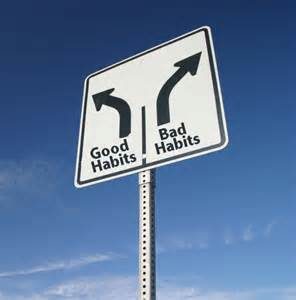Here we go again! Your clothes are tight, the scale is up and you might even be feeling a bit lethargic. Many of you are already considering a diet. DON’T DO IT!
Let’s get back to the basics of good eating and adding more activity and exercise. This time around, instead of the diet mentality, let’s find a way to make this a lasting, permanent change.
As I mentioned, dieting should not be an option. The statistics speak for themselves. DIETS ARE FAILURES! The entire connotation of a diet is a temporary fix. Diets are something you go on, and then go off. It isn’t a way of eating for life. So if not a diet, what should you do?
What are your goals?
Try something that all the scientific and psychological studies say works. First and foremost, it is important to decide on goals. Is this just about the amount of kilograms you want to lose or are there other things involved with your overall health? Some overall goals can be lowering blood pressure, sugar, cholesterol, or being more fit. Perhaps being able to walk briskly for a certain amount of time or distance can be part of your goal setting. Do you have older clothes in your closet you would like to fit into again? Whatever you decide, the important part is setting a goal. Be sure it is attainable and reasonable, but nevertheless, goal setting is very important.
Slow and steady
Aside from establishing goals, there is another important ingredient in the formula towards success. Although it is something missing in our society as a whole these days, but patience is a must. Don’t be in a hurry! Work on small changes over time that will ultimately bring large results. It is the changing of habits that will bring the ultimate success. Yes, we need some basic knowledge of what healthy eating incorporates. And yes, we need to look for every opportunity for more activity and exercise as an essential part of our health and weight loss. Yet the goal is making changes that can have permanence and become a part of life. Get those changes to take hold and only then move on to the next one.
Establishing New Habits
Derrick Price, MS, explains the anatomy of a habit and gives strategies to create new behaviors. Here is a quick look at an approach to creating new habits using the habit loop. Consider working with a certified health or wellness coach to help you strategize and reinforce these habits.
Step 1: As we mentioned, establish goals—both short term and long term.
You might have 25 kilo to lose as a long term goal, but short term goals have to do more with weekly changes. Contrary to popular belief, habits do not take 21 days to form. Habit formation varies greatly from person to person and can take as long as 66 days (Gardner, Lally & Wardle 2012). It’s a long process that requires consistent implementation. If you have an ambitious goal like losing 25 kilos, it’s important to “chunk” it into smaller, less daunting and more realistic outcomes. For example, instead of focusing on losing 25 kilo, a good first milestone is to lose 2.5 kilos in the first month by increasing daily walking and cutting your daily dessert.
Step 2: Identify motivational factors…especially intrinsic motivators.
Intrinsic (internal) motivation involves doing an activity for the inherent satisfaction rather than for a separate consequence. It may be intrinsically important for you to lose weight for a sense of accomplishment, to improve self-confidence or to accelerate your career. Intrinsic motivation is long-lasting compared to an external motivator, like receiving compliments from others on how good you now look. As important as the external motivator may be to you, its staying power is limited.
Step 3: Pick a goal-oriented behavior.
While it might seem appealing to make a lot of changes at once, focusing on one habit at a time may lead to greater success (Gardner, Lally & Wardle 2012). Consider different goal-oriented habits and then pick one. For example, if you want to lose weight, you could choose these two behaviors: Walk and track 10,000 steps per day. Evidence suggests that regular, “incidental” physical activity is effective for weight loss and overall health. And drink 2 cups of water before every meal. Not only may this help with curbing hunger, but it’s calorie-free, and proper hydration may aid in fat loss and overall well-being.
Step 4: Create the cue and reward.
Once you’ve selected a behavior, choose a cue that will trigger it. For example, if you opt to drink 2 cups of water before every meal, consider setting a reminder alarm or keeping a water bottle with you at your work place. Then select a reward to reinforce the behavior.
Step 5: Eliminate disruptors.
You may use disruptors as excuses for not accomplishing a new behavior. If you can identify disruptors, you can overcome pitfalls before they occur. For example, if not having water readily available disrupts the behavior of drinking 2 cups of water before every meal, purchase a water bottle that’s easy to fill and transport.
Step 6: Follow up.
Hold yourself accountable to new behaviors. Work with a health coach or friend who can help you remain accountable.
One other piece of advice: There is nothing wrong with getting help. Go see a dietician, a trainer, or a coach, or even all three! Find a program that gives you a comprehensive way to gain your health back. Remember that you should include all three essential elements in your program: good eating, good exercise and maybe the most important, integrating behavior and habit change as an integral part of your new program. There is no better motivator than seeing your periodic successes until you can get to your overall goal. It might take months or even years to reach your goal, but when you do, it will “add hours to your day, days to your year and years to your life.”


Leave A Comment